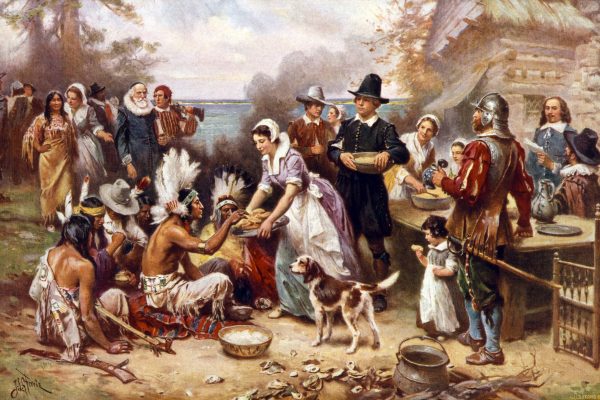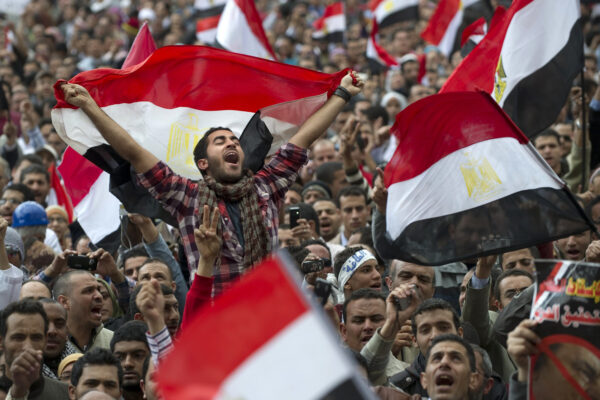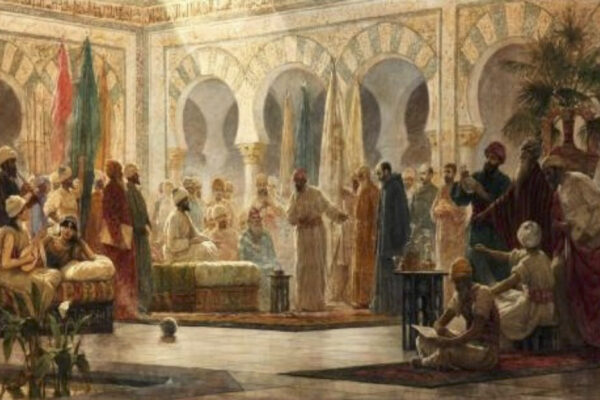These traditions survived for centuries, many until the present day.
These traditions survived for centuries, many until the present day.
In the summer of 2011, an oil wrestling tournament was held in the Turkish city of Edirne — for the 650th time. [1] The Kirkpinar competition, as it is known, was already a time-honoured tradition when the first modern Olympic Games were held in nearby Athens in 1896. Unsurprisingly, in 2010 UNESCO recognized this competition as one of the “Masterpieces of the Oral and Intangible Heritage of Humanity”. The Guinness Book of World Records recognizes it as the oldest continuously practised sports tournament in the world. [2]
The first Kirkpinar competition was held in 1361, about half a century after the founding of the Ottoman Empire. Kirkpinar is the name of the specific place on the outskirts of Edirne where this oil wrestling tournament was (and is) held. Oil wrestling, as the name suggests, involves the wrestlers dousing their bodies and attire with a mixture of olive oil and water. They are generally only wearing a kisbet, a type of leather trousers, and the objective is to get a firm hold of the opponent’s kisbet. This is difficult because the kisbet is very slippery since it is covered in oil.
The Ottomans were very fond of wrestling in general, as they inherited the sport from many different traditions. They were probably aware that the Prophet Muhammad (ﷺ) had himself famously wrestled a man named Rukkanah so skillfully that the latter embraced Islam as a result, and on another occasion, he had asked two young Muslims to wrestle each other in order to demonstrate that they were ready for battle. [3] The Ottomans’ Turkic ancestors in Central Asia were enthusiastic wrestlers. So were the Persians, whose word for “wrestler”, pahlavān, was borrowed by the Ottomans. They learned oil wrestling in particular from the ancient Greco-Romans, which was practised by the Byzantines whose lands they were conquering.
The Ottoman sultans and elite were actively involved in organizing wrestling competitions. Virtually every village, town and city had its champion. It was these local champions who would gather in Kirkpinar to compete, though for much of its history the Kirkpinar competition itself was a local affair. It has been suggested that the Ottomans built a specific lodge for training wrestlers in every town that they conquered, from the Balkans to North Africa and even in Makkah. [4] Matches were often organized on Fridays or as part of Eid celebrations. Wrestlers were invited from across the empire and even beyond it, including some Africans and Indians. Sultans often sponsored the most impressive of these athletes; Süleyman (r. 1520-66) paid his favourite wrestlers a daily wage. [5]
Some sultans went a step further and became wrestlers themselves. The best example of this is Murad IV (r. 1612-40). Murad frequently stripped down and wrestled his court officials, including his calligrapher (who was, of course, a great wrestler himself). There are amusing incidents in which a court servant gave Murad the advice that, since he had already taken a bath and must be exhausted at the end of a long day anyway, he shouldn’t oil himself for wrestling; Murad responded to the servant’s “trash-talking” about the sultan’s exhaustion by lifting him up in the air and spinning him around until he pleaded to be let down. Murad let him down, laughed, and rewarded him with gold coins. [6]
The lodge that was set up across the empire to train wrestlers were known as tekke; the same name used to identify Sufi lodges. This is because athletic and spiritual training went hand-in-hand, in the same space. The tekke included a “gym” modelled after the traditional Persian zurkhaneh (“houses of strength”) where the wrestlers trained, often together with archers and cirit players. [7] They were encouraged to abstain from sex and overeating as much as possible since indulgence was thought to reduce physical strength. The wrestlers also learned about the purity of the heart, selflessness, humility, and respect for others from the Sufi scholars. They were taught to be graceful in both victory and defeat and to respectfully kiss the hand of an older wrestler who they defeated in a match. [8]
Another way that spirituality was tied with the sport was through a prayer that seems to have been recited by both competitors before a wrestling match began. In the case of Murad IV, it went as follows:
“O Allāh! O Allāh! For the sake of the master of all created beings, Muhammad Mustafa […] let there be laying of hand upon hand, back upon back, chest upon chest. For the love of ‘Alī, the lion of Allāh, grant assistance, O Master.” [9]
This shows the reverence that was shown to the Prophet Muhammad as well as his intimate companion ‘Alī ibn Abū Tālib, who was known for his physical strength and valour.
These traditions survived for centuries, many until the present day. At times certain aspects of this wrestling culture were changed; this was especially the case starting in the late 19th century (1875-1914). This period saw the introduction and rise of new sports to the Ottoman Empire, including soccer, rowing, cycling and gymnastics. [10] It also saw many Ottoman oil wrestlers take up the Greco-Roman style and, starting in 1910, modern mat wrestling. Some of the more successful wrestlers in these new styles toured across Europe and the United States, where there was a wrestling boom at the time and where the persona of the “Terrible Turk” (Koça Yusuf) was a big hit. [11] It is even said that this began the tradition of bringing in the “foreign savage” which still persists in modern professional wrestling in the United States.
Ottoman-era oil wrestling survived the collapse of the Ottoman Empire itself. In 1922, the same year that the empire was formally abolished, the national Turkish Wrestling Federation (TWF) was set up to manage wrestling in the country, including oil wrestling. Although competitions such as the one at Kirkpinar continued the way they had for centuries, one Turkish wrestler who was born in 1874 and saw generations of oil wrestlers expressed his concern in 1951 that that oil wrestling was dying out. [12] But even Turkey’s champions such as Mahmud Atalay, the “most technical wrestler in the world” in 1968, and Ahmet Ayik (silver at 1964 Olympics; gold in 1968) did not forget their humble origins in Ottoman oil wrestling.
And at the end of 2017, several months after the 656th annual oil wrestling tournament at Kirkpinar, the president of the TWF, Musa Aydin, said that “Turkish wrestling is seeing its golden age”. [13]
NOTES
[1] Birgit Krawietz, “The Sportification and Heritagisation of Traditional Turkish Oil Wrestling”, The International Journal of the History of Sport 29, no. 15 (October 2012): 2156. [2] Fatma Nur Başaran and Banu Hatice Gürcüm, “The Yağh Güreş Tradition in Kırkpınar and the Last Master of Kıspet-Making”, Folk Life: Journal of Ethnological Studies 49 (2011): 104. [3] “The Prophet Wrestles a Champion [Shaykh Abdul Nasir Jangda]”, YouTube, last modified April 29, 2013, https://www.youtube.com/watch?v=2cpKve_LbG0; Martin Lings, Muhammad: His Life Based on the Earliest Sources (Toronto, ON: Inner Traditions, 2006), 177 – see the story of Samurah and Rāfi‘ at the start of the 51st chapter. [4] Krawietz, “Turkish Oil Wrestling”, 2148. [5] Mehrdad Kia, Daily Life in the Ottoman Empire (Santa Barbara, CA: The Greenwood Press, 2011), 256. [6] Ibid., 257. [7] Krawietz, “Turkish Oil Wrestling”, 2148. [8] Kia, Daily Life in the Ottoman Empire, 258. [9] Evliya Efendi (Çelebi), Narratives of Travels in Europe, Asia, and Africa in the Seventeenth Century, trans. Ritter Joseph Von Hammer (London: Parbury, Allen, & Co., 1834), 1:139. [10] Ekrem Buğra Ekinci, “Sports culture in Ottoman society”, Daily Sabah, October 14, 2016, https://www.dailysabah.com/feature/2016/10/14/sports-culture-in-ottoman-society. [11] Graham Noble, “The life and death of the Terrible Turk”, Eurozine, May 23, 2003, http://www.eurozine.com/the-life-and-death-of-the-terrible-turk/. [12] Krawietz, “Turkish Oil Wrestling”, 2156. [13] Andolu Agency, “Turkish wrestlers eye medal haul at 2020 Olympics”, Daily Sabah, December 28, 2017, https://www.dailysabah.com/sports/2017/12/29/turkish-wrestlers-eye-medal-haul-at-2020-olympics.




